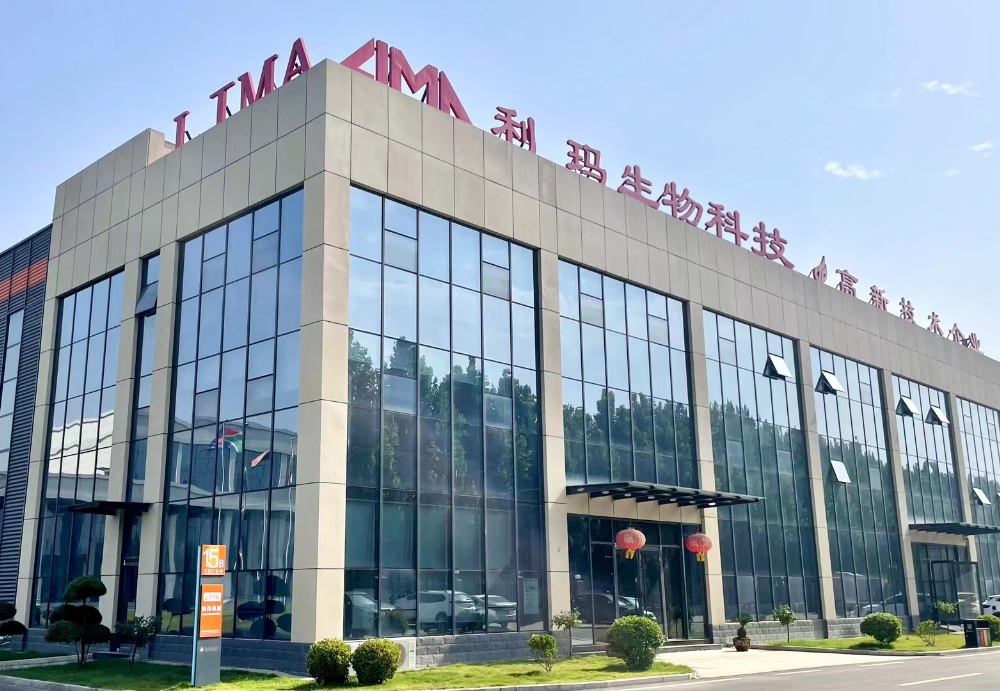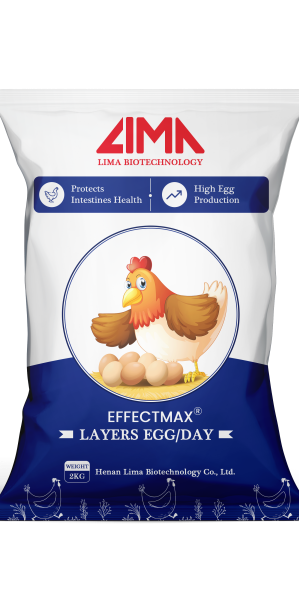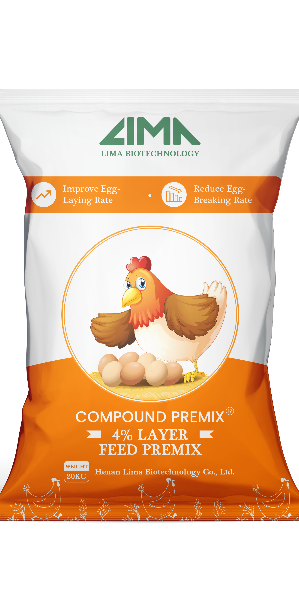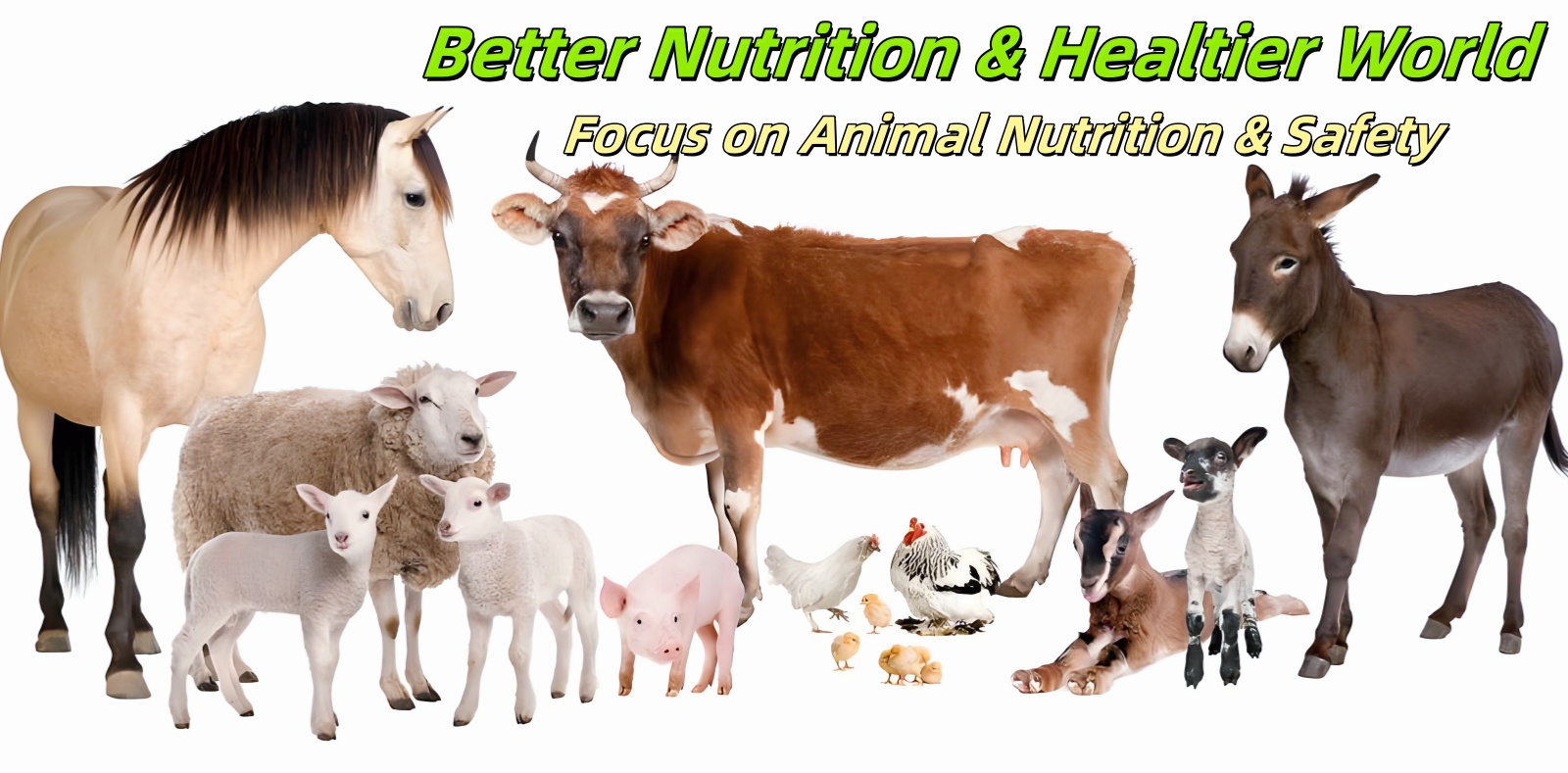In Ghana's poultry farming sector, egg production is central to profitability, and stable market demand has attracted numerous small and medium-sized farmers to engage in layer farming. Egg production enhancers, through mechanisms like precise nutritional supplementation, effectively boost egg production rates and egg quality, serving as a key technological support.
Stable market demand makes them a popular choice among small and medium-sized farmers. By providing precise nutritional supplementation, regulating bodily functions, and optimizing gut health, egg production enhancers overcome production bottlenecks, achieving dual improvements in both output and quality.
Key Factors Influencing Laying Hen Production
Laying hen production results from the synergistic interaction of multiple factors. Any deficiency or imbalance in these elements can lead to reduced output. Below, we analyze the core factors affecting Ghanaian laying hen production across five dimensions: nutrition, water supply, lighting, health status, and husbandry management.
Nutrition
Laying hens expend significant energy during egg production, making balanced nutrition crucial. Protein quality impacts egg white consistency, calcium affects shell strength, and energy supply determines laying drive. Ghanaian farmers must precisely control feed formulations to ensure laying-phase protein levels of 16%-18%, calcium at 3.5%-4%, and adequate energy maintenance—preventing nutritional imbalances that impair egg production.
Water Supply
Water is vital for laying hens yet often overlooked by Ghanaian farmers. Dehydration reduces appetite and disrupts digestion, lowering egg production. Contaminated water sources may cause intestinal diseases or poisoning, jeopardizing flock health and egg safety. Therefore, continuous access to clean water must be provided, with regular cleaning of drinking equipment.
Lighting
Laying hens' egg production is significantly influenced by light cycles. Light stimulation triggers the hypothalamus to release gonadotropin-releasing hormone, regulating ovarian function. Natural daylight varies seasonally; insufficient or unstable winter light impacts egg production. Ghanaian farmers should implement scientific lighting protocols, ensuring 14-16 hours of daily illumination (natural + supplemental) during the laying period. Maintain uniform light intensity at 2-3 watts per square meter.
Health Status
The health of laying hens directly impacts egg production capacity. Viral diseases such as Newcastle disease and avian influenza, along with bacterial diseases like colibacillosis, can cause hens to become lethargic, experience a sudden drop in egg production, or even die. Parasitic infections like roundworms and coccidiosis lead to impaired nutrient absorption, resulting in reduced egg output and quality. Improper vaccination can also weaken disease resistance. Therefore, Ghanaian farmers should establish comprehensive prevention and control systems, administer key vaccines regularly, maintain coop disinfection, promptly isolate and treat sick birds, and prevent disease transmission.
Feeding Management
The precision of feeding management directly impacts laying hens' egg-laying environment and stress levels. Poor ventilation in housing allows harmful gases like ammonia and hydrogen sulfide to accumulate, triggering respiratory diseases. Temperatures exceeding 30°C (86°F) or falling below 10°C (50°F) readily cause stress-induced production declines.
Stocking densities exceeding 10 birds per square meter provoke pecking and cannibalism, increasing disease risks. Additionally, external disturbances such as frequent feed changes, transportation, and noise disrupt egg production. Ghanaian farmers should optimize management by maintaining good ventilation, temperatures between 18-25°C, and appropriate stocking densities to minimize stressors.
Five Common Types of Layer Egg Enhancers in Ghana
Addressing layer production needs, layer performance enhancers in Ghana's market fall into five main categories, each with distinct functions. Farmers should select products based on their specific operational requirements.
Commercial Feed Additives
Commercial feed additives are common egg production enhancers in Ghana, including premixes and vitamin-mineral supplements. Premixes contain multiple nutrients and can be directly blended into base feed; vitamin-mineral supplements offer targeted benefits, such as vitamin D for calcium absorption. lima layer egg booster incorporate multiple vitamins, probiotics, and enzymes. These products are convenient to use, nutritionally sound, and suitable for all types of farmers.
Protein Supplements
Supplementing protein is critical when laying hens face protein deficiency or during peak production periods. Among protein supplements commonly used by Ghanaian farmers, soybean meal (crude protein 40%-45%) and fish meal (crude protein 60%-70%) serve as traditional sources—nutritionally stable but relatively costly. Emerging insect proteins—maggots (crude protein 50%-60%) and black soldier fly larvae (crude protein 40%-50%)—are rich in amino acids and minerals. They can be cultivated cost-effectively using organic waste, making them a new choice for small and medium-sized farmers.
Calcium and Mineral Sources
Calcium and minerals are essential raw materials for eggshell formation. Insufficient calcium intake in laying hens reduces eggshell quality. Common calcium sources in Ghana include oyster shells (over 90% calcium carbonate, high calcium content and easy absorption, suitable for laying hens), limestone (80%-85% calcium carbonate, low cost, suitable for feed mixing), and dicalcium phosphate (provides both calcium and phosphorus, promoting bone and eggshell development). These materials may be added individually or blended with egg production enhancers to ensure daily calcium intake of 3-4 grams per hen.
Herbal/Natural Egg Production Enhancers
As Ghanaian farmers increasingly demand “green farming,” herbal/natural enhancers are favored for their safety and residue-free properties. Garlic, containing allicin, inhibits bacteria and protects the gut. Moringa leaves, rich in nutrients, enhance egg production and quality. Ginger stimulates appetite and aids digestion, while turmeric boosts immunity through its antioxidant properties. These ingredients can be sun-dried, ground, mixed into feed, or fed as extracts, offering an optimal solution for “antibiotic-free farming” pursuing high-quality eggs.
Probiotics and Enzyme Preparations
Probiotics and enzyme preparations regulate the intestinal flora of laying hens, enhance digestive enzyme activity, improve feed utilization, and thereby increase egg production. Probiotics suppress harmful bacteria such as E. coli to maintain intestinal health; enzyme preparations break down feed nutrients, reducing the feed-to-egg ratio. Suitable for hens with poor digestion and high feed-to-egg ratios, they require long-term use to stabilize the intestinal environment.
Recommended Egg Booster for Ghanaian Laying Hens
Among numerous egg production enhancers in the Ghanaian market, Lima Layer Egg Promoter stands out as the preferred choice for many farmers due to its comprehensive efficacy and remarkable results.
Key Ingredients
Every safeguard of quality originates from meticulously selected premium ingredients. We rigorously choose multiple valuable components to support your health:
- Glycoterpenoids: Natural bioactive compounds extracted from plants, composed of sugars and terpenes. They regulate immune function, optimize gut microbiota structure, and enhance nutrient digestion and absorption, helping strengthen the body's defenses and laying the foundation for a lighter, healthier core.
- Oligosaccharides: Carbohydrates formed by the polymerization of 2–10 monosaccharide molecules. While indigestible by the human gastrointestinal tract, they serve as nutrients for beneficial gut microbes. They support the proliferation of beneficial bacteria like bifidobacteria, regulate intestinal microecological balance, and help maintain gut health.
- Xylooligosaccharides: A functional oligosaccharide with high stability and resistance to acid and heat. It selectively promotes the proliferation of bifidobacteria, gently regulates the intestinal environment, stimulates intestinal motility, reduces the accumulation of harmful substances, and keeps the gut feeling light.
- Date Palm Complex Enzymes: A multi-enzyme complex extracted from dates, containing amylase, protease, and other enzymes. It helps break down macromolecular nutrients in food, promotes digestion, awakens the body's nutrient absorption vitality, and enhances nutrient utilization.
- Hawthorn: A food-medicine dual-use ingredient rich in organic acids and flavonoids. Its sweet-tart flavor not only stimulates appetite but also aids digestion, strengthens the stomach, promotes qi circulation, and disperses blood stasis. This supports nutrient absorption and maintains normal digestive function.
- Alpha-Mannan Peptides: An immune modulator that activates immune cells to enhance overall immunity. It also exhibits anti-tumor and anti-infective properties, providing multidimensional health support.
- Bioactive Peptide Plant Extracts: Small-molecule peptides with biological activity extracted from various plants. They possess multiple functions including antioxidant effects, immune regulation, and cell repair promotion. These peptides participate in diverse physiological activities, replenishing the body with active nutrients.
- SF - LDP: A proprietary ingredient that synergizes with the above nutrients. It optimizes nutrient absorption pathways, promotes intercomponent collaboration, and releases nutritional energy in layers. This infuses daily health with abundant vitality, allowing the body to radiate inner and outer brilliance.
Exceptional Efficacy
The core advantage of Lima Layer Egg Enhancer lies in its “multi-functional integration,” simultaneously improving hen physiology while boosting egg production and quality. Its specific benefits encompass six key areas:
- Optimized Gut Digestion: Active ingredients enhance gastrointestinal mucosal structure, elevate digestive enzyme activity, and promote nutrient absorption (e.g., protein, calcium, energy), ensuring thorough feed digestion. In practical application, this reduces feed consumption, lowering the feed-to-egg ratio (the ratio of feed consumption to egg production) by 2-3%, directly cutting farming costs.
- Activates Ovarian Function: By regulating the endocrine system, it promotes the function of the hypothalamic-pituitary-ovarian axis, accelerating follicle development, maturation, and ovulation. This increases egg production rates by 3-5%. Particularly suitable for laying hens during peak production, it effectively maintains stable egg production rates.
- Enhances oviduct function: Increases oviduct weight, boosts secretory function of oviduct glands, and enhances egg white secretion. Simultaneously promotes calcium absorption and eggshell pigment deposition, resulting in harder shells with smooth, glossy surfaces. Egg weight increases by 2-5%, with significant reductions in thin-shelled and damaged eggs.
- Strengthens Immunity: By activating the immune system, it elevates antibody titers and uniformity, bolstering disease resistance. It also enhances stress tolerance (e.g., temperature fluctuations, transport stress), reducing morbidity and mortality. Long-term use can decrease medication requirements, with total drug costs potentially dropping by 80% or more.
- Detoxification and Sub-Health Improvement: The product's antioxidant components eliminate oxygen free radicals within the hens while promoting liver detoxification. This expels both exogenous toxins (e.g., feed toxins) and endogenous toxins (e.g., metabolic waste), helping hens overcome suboptimal health conditions. It particularly reduces the incidence of egg-laying fatigue syndrome (e.g., post-laying lethargy and weakness), extends the peak laying period by 2-5 months, and increases overall egg production.
- Regulates intestinal environment: By suppressing the proliferation of pathogenic bacteria like E. coli and Salmonella in the gut while increasing beneficial bacteria such as lactobacilli and bifidobacteria, it improves feces consistency—transforming loose droppings into firmer, lower-moisture feces. This significantly reduces fecal odor, enhances coop hygiene, and decreases respiratory disease incidence.
Usage Effects
The effects of Lima Egg Enhancer exhibit distinct phases. Farmers can assess product efficacy by observing hen condition and egg quality, as follows:
- After 7 days of use: Hen feed digestion and absorption efficiency markedly improves. Feces become more formed and darker in color (indicating thorough nutrient absorption), with reduced feed residue.
- After 10 days of use: Eggshell quality markedly improves, with smoother, glossier surfaces and brighter colors (e.g., darker brown shells). Thin-shelled and damaged eggs decrease by over 50%, enhancing egg market value.
- After 15 days of use: Odors such as ammonia and hydrogen sulfide in the henhouse are noticeably reduced. The incidence of intestinal diseases (e.g., enteritis, diarrhea) in laying hens decreases by over 60%, and the flock exhibits increased vitality.
- After 20 days of use: Fertilization rates in breeding hens increase by 3-5%. With long-term use (over 3 months), hatching rates of breeding eggs improve by 5-8%, and healthy chick rates rise by approximately 10%, laying a solid foundation for subsequent breeding.
- Use during chick rearing: Promotes uniform chick growth, improves flock uniformity by over 15%, prevents malnutrition and increased mortality caused by restricted feeding (weight control), and boosts chick survival rate by 8-10%.
- Use after 60 days of age: Regulates the growth rhythm of breeding stock, synchronizing physical maturity (body weight, skeletal development) with sexual maturity (ovary and oviduct development). Prevents delayed onset of laying and low egg production rates caused by asynchronous development. Long-term use extends the peak laying period by 2-5 months, ensuring stable high production throughout the entire laying cycle.
Four Common Misconceptions in Using Layer Egg Booster
While egg-boosting agents play a crucial role in enhancing egg production, some Ghanaian farmers encounter significant pitfalls due to insufficient knowledge or improper application. These errors not only fail to maximize the agents' effectiveness but may also increase farming risks.
Neglecting Balanced Feed
Some farmers mistakenly believe egg-boosting agents can replace balanced feed. In reality, these agents only serve as supplements. If low-protein, low-calcium, cheap feed is used while neglecting essential nutrients, even with added boosters, laying hens will lack the raw materials for egg production. This leads to poor boosting results and may even cause malnutrition and declining egg output. Therefore, it must be clear: high-quality feed is the foundation of egg production and must be used synergistically with boosters to achieve optimal results.
Excessive Supplementation
Some farmers fall into the misconception that “more is better,” blindly increasing egg-boosting agent dosages or even mixing similar products. In reality, overuse backfires: excessive protein supplements strain hens' kidneys, too much calcium causes digestive issues, and overusing drug-based boosters leads to drug residues, compromising egg safety. Scientific farming requires adherence to product instructions, eliminating the misconception that “more is better.”
Neglecting Poultry House Environment
Some farmers attribute declining egg production to ineffective egg-boosting agents, overlooking that fundamental management is the key factor. Imbalanced coop environments cause stress, inadequate water supply disrupts digestion, and insufficient disease prevention increases infection risks. Even high-quality egg-boosting agents cannot compensate for these management deficiencies. Therefore, farmers must adopt a “comprehensive management” approach, simultaneously optimizing egg-boosting agent application, environmental control, water supply assurance, and disease prevention to effectively increase egg production.
Use of Counterfeit Products
Ghana's egg-laying hen stimulant market is rife with counterfeit products. Some unscrupulous merchants produce fakes using talcum powder or cornmeal, engage in false advertising, or operate without proper certification. Farmers who mistakenly use such products not only fail to increase production but may also cause poisoning and death in hens or result in drug residue exceeding standards in eggs. It is recommended to purchase through official authorized distributors, large agricultural supply markets, and other legitimate channels, carefully verifying production licenses, inspection reports, and other qualification documents to mitigate risks.
Expert Recommendations for Enhancing Laying Hen Productivity in Ghana
Based on Ghanaian poultry farming realities and industry expertise, experts propose four key strategies to boost egg production, enabling farmers to achieve “cost reduction, efficiency gains, and stable high yields.”
Prioritize High-Quality Feed and Supplements
Experts emphasize that high-quality feed is central to achieving high egg production. Ghanaian farmers should select specialized laying phase feeds from reputable manufacturers to ensure balanced nutrition in protein, calcium, and energy. Additionally, scientifically apply egg-boosting agents according to the hens' growth stages: use products combining nutrition and immune support during peak laying, and growth-promoting products during the chick rearing phase. Avoid using substandard products to prevent reduced egg production, disease outbreaks, and increased farming costs.
Develop and Implement Scientific Lighting Protocols
Lighting is crucial for regulating the laying cycle. Ghanaian farmers should tailor lighting schedules by growth stage:
- Brooding Stage (0-6 weeks): Maintain 23-24 hours of continuous light to maximize chick feeding activity and establish a foundation for healthy growth.
- Growing stage (7–18 weeks): Reduce light duration to 8–10 hours to effectively control sexual maturation and prevent premature egg laying.
- aying stage (from 19 weeks): Maintain stable 14–16 hours of light at an intensity of 2–3 watts/m² to create an optimal light environment for high and consistent production.
Recommended supplementary lighting: LED lamps evenly distributed throughout the house to ensure stable, adequate illumination.
Creating a Stress-Free Farming Environment
Laying hens are highly sensitive to environmental stress. Experts advise Ghanaian farmers to implement precise management practices to minimize stress:
Ventilation: Install fans and ventilation windows to maintain ammonia concentrations below 20 ppm. For temperature management, use misting systems in summer to maintain temperatures below 30°C and employ heating equipment in winter to keep temperatures above 10°C. Maintain stocking densities at 8-10 birds per square meter. Additionally, transition feed changes gradually over 7 days, minimize noise disturbances, and create a comfortable environment for laying hens.
Establish a Comprehensive Biosecurity System
Disease poses the greatest threat to egg production. Experts recommend Ghanaian farmers establish a biosecurity system through four key measures:
- Cleaning and Disinfection: Disinfect chicken house floors, walls, watering equipment, and feeders 1-2 times weekly (using disinfectants like glutaraldehyde or peracetic acid), with a thorough monthly disinfection;
- Personnel and Vehicle Control: Prohibit unauthorized entry; require farm staff to change clothes and disinfect footwear; spray-disinfect transport vehicles before entry.
- Dead Bird Disposal: Implement safe disposal methods like incineration or deep burial; prohibit random abandonment.
- Vaccine management: Administer vaccines for Newcastle disease, avian influenza, etc., as recommended by veterinarians, and regularly monitor antibody levels. These measures reduce disease incidence and ensure stable egg production.
Conclusion
Achieving high productivity and profitability in Ghana's layer farming requires a multi-pronged approach. Founded on balanced nutrition, clean water, scientific lighting, and health management, layer production enhancers should be scientifically selected as supplementary tools while avoiding pitfalls like substitute feeds or excessive use. Experts emphasize that through quality inputs, scientific lighting, stress-free management, and biosecurity protocols, layer potential can be maximized, peak production periods extended, costs reduced, and sustainable profitability achieved.
- About Lima Biotech
- Careers-Lima Biotech
- Code of Conduct-Lima Biotech
- Conditions of Sale-Lima Biotech
- Contact-Lima Biotech
- Cookies Policy-Lima Biotech
- Find Agent-Lima Biotech
- Global Warehouses
- Investor Relations-Lima Biotech
- Legal Information-Lima Biotech
- Privacy Policy-Lima Biotech
- Success-Lima Biotech
- Sustainability-Lima Biotech
- World Class Manufacturing-Lima Biotech





















